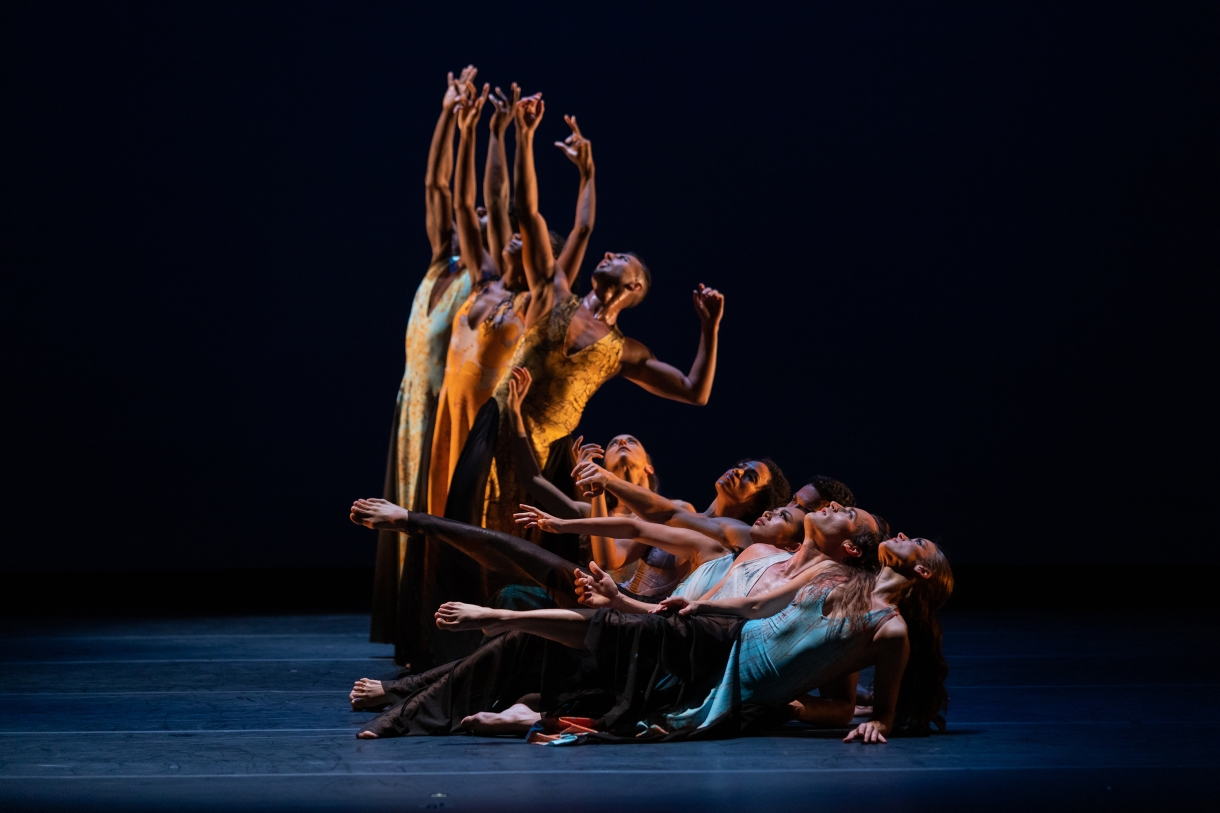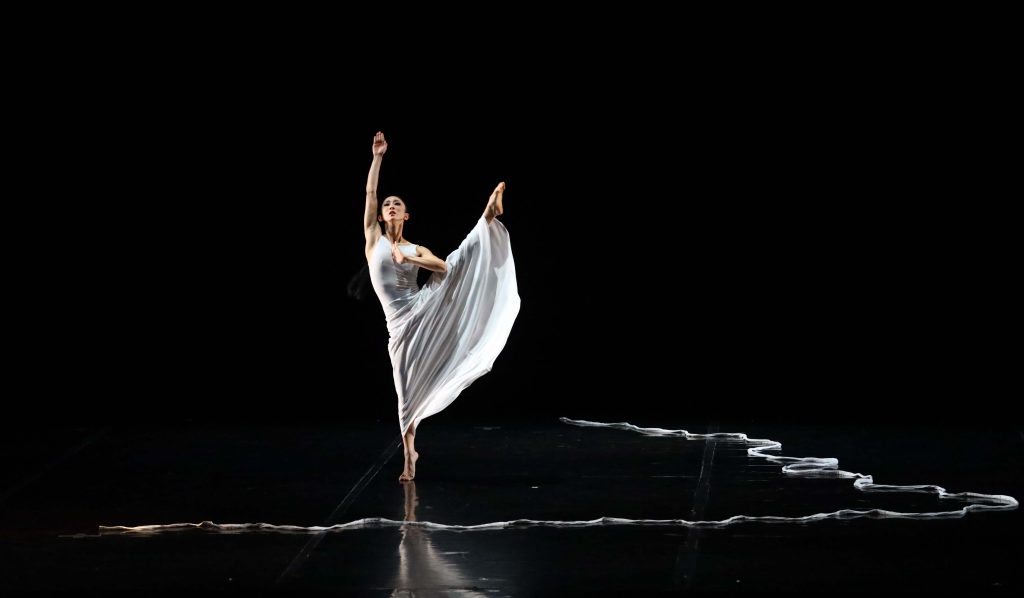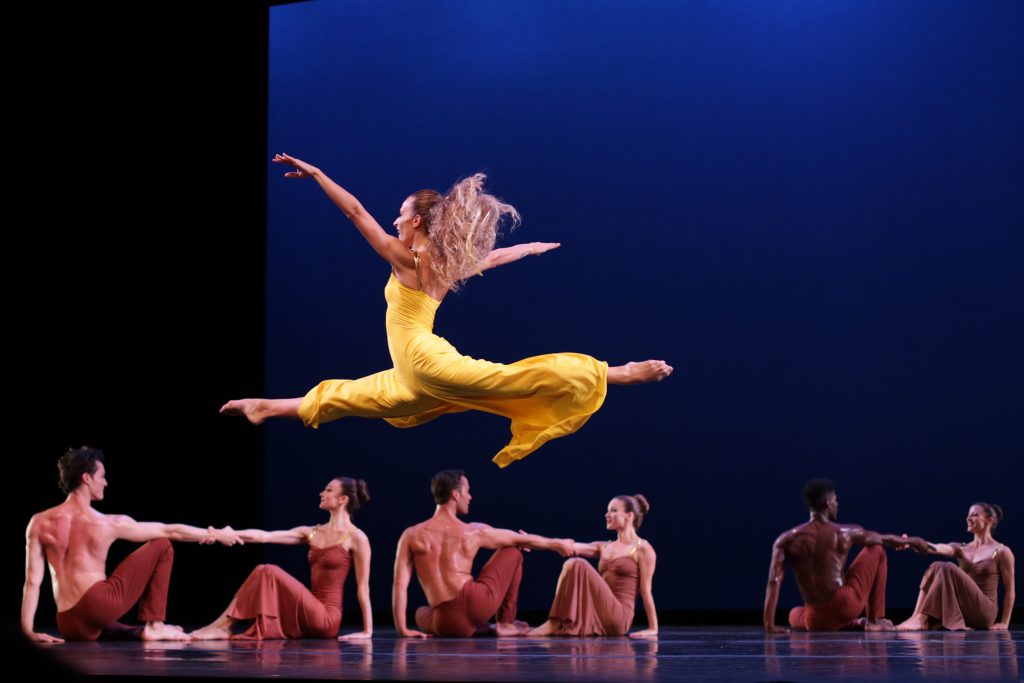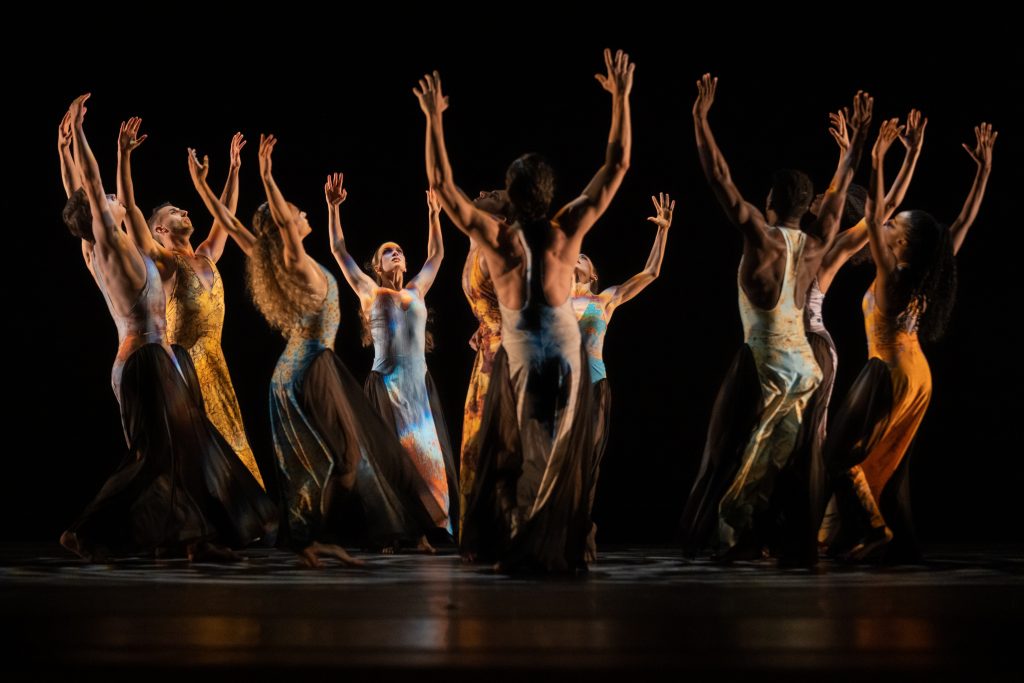
The Weis Center for the Performing Arts will welcome renowned Martha Graham Dance Company (MGDC) on Thursday, September 14 at 7:30 p.m. at the Weis Center. MGDC has been a leader in the evolving art form of modern dance since its founding in 1926.
Patrons are encouraged to arrive early, as there will be a free pre-performance talk from 6:45-7:15 p.m. in the Weis Center Atrium with MGDC Artistic Director Janet Eilber. The talk will be facilitated by Bucknell Professor Kelly Knox.
The performance is sponsored, in part, by Gary and Sandy Sojka.
The Company is both the oldest dance company in the United States and the oldest integrated dance company.
Today, the Company is embracing a new programming vision that showcases masterpieces by Graham alongside newly commissioned works by contemporary artists. With programs that unite the work of choreographers across time within a rich historical and thematic narrative, the Company is actively working to create new platforms for contemporary dance and multiple points of access for audiences.
Since its inception, the Martha Graham Dance Company has received international acclaim from audiences in more than 50 countries throughout North and South America, Europe, Africa, Asia, and the Middle East. The Company has performed at the Metropolitan Opera House, Carnegie Hall, the Paris Opera House, Covent Garden, and the John F. Kennedy Center for the Performing Arts, as well as at the base of the Great Pyramids in Egypt and in the ancient Odeon of Herodes Atticus theater on the Acropolis in Athens. In addition, the Company has also produced several award-winning films broadcast on PBS and around the world.
Though Martha Graham herself is the best-known alumna of her company, the Company has provided a training ground for some of modern dance’s most celebrated performers and choreographers. Former members of the Company include Merce Cunningham, Erick Hawkins, Paul Taylor, John Butler and Glen Tetley. Among celebrities who have joined the Company in performance are Mikhail Baryshnikov, Margot Fonteyn, Rudolf Nureyev, Maya Plisetskaya, Tiler Peck, Misty Copeland, Herman Cornejo and Aurelie Dupont.
In recent years, the Company has challenged expectations and experimented with a wide range of offerings beyond its mainstage performances. It has created a series of intimate in-studio events, forged unusual creative partnerships with the likes of SITI Company, Performa, the New Museum, Barney’s, and Siracusa’s Greek Theater Festival (to name a few); created substantial digital offerings with Google Arts and Culture, YouTube, and Cennarium; and created a model for reaching new audiences through social media. The astonishing list of artists who have created works for the Graham dancers in the last decade reads like a catalog of must-see choreographers: Kyle Abraham, Aszure Barton, Sidi Larbi Cherkaoui, Lucinda Childs, Marie Chouinard, Michelle Dorrance, Nacho Duato, Mats Ek, Andonis Foniadakis, Liz Gerring, Larry Keigwin, Michael Kliën, Pontus Lidberg, Lil Buck, Lar Lubovitch, Josie Moseley, Richard Move, Bulareyaung Pagarlava, Annie-B Parson, Yvonne Rainer, Sonya Tayeh, Doug Varone, Luca Vegetti, Gwen Welliver and Robert Wilson.
The current company dancers hail from around the world and, while grounded in their Graham core training, can also slip into the style of contemporary choreographers like a second skin, bringing technical brilliance and artistic nuance to all they do — from brand new works to Graham classics and those from early pioneers such as Isadora Duncan, Jane Dudley, Anna Sokolow, and Mary Wigman.
“Some of the most skilled and powerful dancers you can ever hope to see,” according to the Washington Post last year.
“One of the great companies of the world,” says The New York Times, while Los Angeles Times notes, “They seem able to do anything, and to make it look easy as well as poetic.”
At the Weis Center, they will present Errand into the Maze, Diversion of Angels and Canticle for Innocent Comedians.
ABOUT THE WORKS

ERRAND INTO THE MAZE (1947)
Errand into the Maze premiered in 1947 with a score by Gian Carlo Menotti, set design by Isamu Noguchi and starring Martha Graham. The duet is loosely derived from the myth of Theseus, who journeys into the labyrinth to confront the Minotaur, a creature who is half man and half beast. Martha Graham retells the tale from the perspective of Ariadne, who descends into the labyrinth to conquer the Minotaur. The current production of Errand into the Maze was created in reaction to the damage done to the sets and costumes by Hurricane Sandy. This version, stripped of the classic production elements, is meant to intensify our focus on the dramatic, physical journey of the choreography itself.
DIVERSION OF ANGELS (1948)

Diversion of Angels, originally titled Wilderness Stair, premiered at the Palmer Auditorium of Connecticut College on August 13, 1948. The title, as well as a set piece designed by Isamu Noguchi suggestive of desert terrain, was discarded after the first performance, and the dance was reconceived as a plotless ballet. Diversion of Angels is set to a romantic score by Norman Dello Joio and takes its themes from the infinite aspects of love. The Couple in Red embodies romantic love and “the ecstasy of the contraction”; the Couple in White, mature love; and the Couple in Yellow, a flirtatious and adolescent love.
Martha Graham recalled that when she first saw the work of the modern artist Wassily Kandinsky, she was astonished by his use of color, a bold slash of red across a blue background. She was determined to make a dance that would express this. Diversion of Angels is that dance, and the Girl in Red, dashing across the stage, is the streak of red paint bisecting the Kandinsky canvas. —ELLEN GRAFF

CANTICLE FOR INNOCENT COMEDIANS
Martha Graham created Canticle for Innocent Comedians in 1952, taking the title and inspiration from the 1938 poem by Ben Belitt, her old friend and colleague at the Bennington School of the Dance. The multifaceted work was built around virtuosic vignettes for the stars of the Graham Company, each celebrating a different element of nature: Sun, Earth, Wind, Water, Fire, Moon, and Stars. The work was well received, reputed to have been magical; however, there is only a fragmented record remaining, and it is considered lost.
This 2022 Canticle for Innocent Comedians is a reimagining of the original. The choreography is completely new but draws upon Graham’s stylistic blueprint. The vignettes have been re-made for today’s Graham stars by dance-makers from diverse dance backgrounds. Fortunately, Graham’s staging of “Moon” was filmed in the 1950s and is included in the new production.
A lyrical, percussive, ruminative score has been created by the great jazz pianist, Jason Moran.
The lead choreographer, Emmy and Tony award winner Sonya Tayeh, has designed the connective tissue for this eclectic assemblage – in the words of the original poem, “that binds the halves of first and last/To single troth, in time” — for the dancers of the Ensemble, weaving in and out of the sections in a manner reminiscent of a Greek chorus, and resonating with many Graham classics. The costumes by Karen Young are inspired by voluminous, swirling shapes that Graham often used for the costumes she herself designed. They are fabricated from recycled plastic bottles to add to the conversation about the eternal values of nature — and our responsibilities to the planet.
ABOUT MARTHA GRAHAM
Martha Graham has had a deep and lasting impact on American art and culture. She single-handedly defined contemporary dance as a uniquely American art form, which the nation has in turn shared with the world. Crossing artistic boundaries, she collaborated with and commissioned work from the leading visual artists, musicians, and designers of her day, including sculptor Isamu Noguchi and composers Aaron Copland, Samuel Barber, and Gian Carlo Menotti.
Graham’s groundbreaking style grew from her experimentation with the elemental movements of contraction and release. By focusing on the basic activities of the human form, she enlivened the body with raw, electric emotion. The sharp, angular, and direct movements of her technique were a dramatic departure from the predominant style of the time.
Graham influenced generations of choreographers that included Merce Cunningham, Paul Taylor, and Twyla Tharp, altering the scope of dance. Classical ballet dancers Margot Fonteyn, Rudolf Nureyev, and Mikhail Baryshnikov sought her out to broaden their artistry. Artists of all genres were eager to study and work with Graham—she taught actors including Bette Davis, Kirk Douglas, Madonna, Liza Minnelli, Gregory Peck, Tony Randall, Eli Wallach, Anne Jackson, and Joanne Woodward to utilize their bodies as expressive instruments.
During her long and illustrious career, Graham created 181 dance compositions. During the Bicentennial she was granted the United States’ highest civilian honor, The Medal of Freedom. In 1998, TIME Magazine named her the “Dancer of the Century.” The first dancer to perform at the White House and to act as a cultural ambassador abroad, she captured the spirit of a nation. “No artist is ahead of his time,” she said. “He is his time. It is just that the others are behind the time.”
TICKETS
Tickets are $30 for adults, $24 for seniors 62+ and subscribers, $20 for youth 18 and under, $20 for Bucknell employees and retirees (limit 2), free for Bucknell students (limit 1) and $20 for non-Bucknell students (limit 2).
Tickets can be reserved by calling 570-577-1000 or online at Bucknell.edu/BoxOffice.
Tickets are also available in person from several locations including the Weis Center lobby (weekdays 10 a.m. to 4 p.m.) and the CAP Center Box Office, located on the ground floor of the Elaine Langone Center (weekdays 10 a.m. to 4 p.m.).
For more information about the Weis Center for the Performing Arts, go to Bucknell.edu/WeisCenter or search for the Weis Center on Instagram, Facebook, Twitter or YouTube.